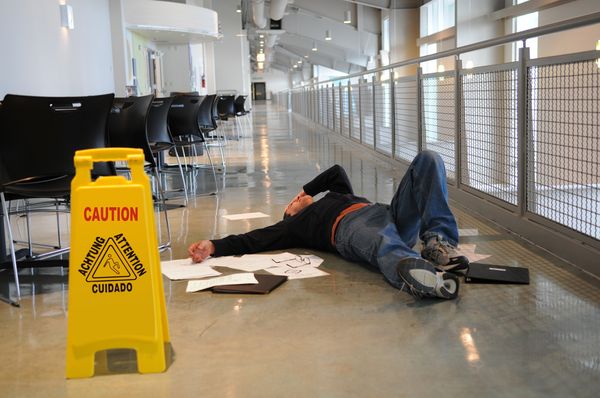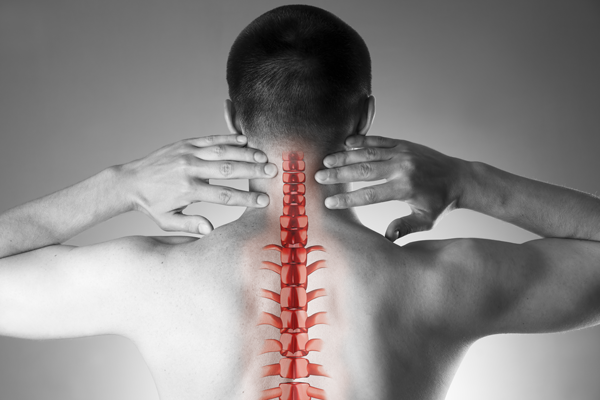- August 2, 2022
- Sciatica
When sciatica strikes, it can feel like your whole body is in pain. Your hip could be stiff or sore, your lower back may ache, and you might feel tingling or numbness along your leg from the hip down. It can get so bad that even sitting down can be painful. The good news is that there are several sciatica treatment options.
With our Sunrise sciatica treatment, we take a holistic approach to treating pain caused by compression of the sciatic nerve. The sciatic nerve runs from the spinal cord to the lower limbs and is responsible for controlling movement and sensation in the hips, buttocks, and legs.
If you suspect sciatica, we can help. Our doctors can help you achieve your highest level of independence possible with our chiropractic adjustments and physiotherapy treatment options. We’ll recommend the best course of action and provide you with ongoing support throughout your recovery process.
How Do You Develop Sciatica?
The sciatic nerve is formed by several nerve roots in your lower back (lumbar region). The nerve runs through your buttocks and down each leg as far as your feet. In some cases, the sciatic nerve may become irritated or compressed as it passes through tiny openings in your pelvis (sacroiliac joints). If this irritation becomes worse over time due to repeated stress on your lower back, it can cause pain along the course of your sciatic nerve that radiates into one or both legs.
Many different conditions can cause sciatica, including:
Slipped Disc
When one of the discs between your vertebrae becomes damaged, it may slip out of place and press on nearby nerves. This causes inflammation in those nerves and results in sciatica.
Herniated Disc
Sometimes the soft gel-like center of your spinal discs leaks out through tiny tears in the outer part of your vertebrae, causing pressure on surrounding nerves. This herniated disc causes inflammation in those nerves, resulting in sciatica.
Spinal Stenosis
This condition causes spinal canal narrowing, which can irritate or compress the spinal cord or nerves, leading to sciatica symptoms.
Bone Spurs on Vertebrae
Spondylosis is a degenerative condition that occurs in the vertebrae of your spine as you age. They develop from arthritic changes in the joints between bones in your spine. These bone spurs can put pressure on your sciatic nerve, causing symptoms such as pain, numbness, and tingling.
Infections
Infections can cause inflammation of tissues around the sciatic nerve, leading to compression and irritation of this nerve. One such infection is an epidural abscess, which is an infection that forms between layers of tissue around your spine called an epidural space. Infections can also spread from within your spine to nerves that travel through it.
Signs and Symptoms of Sciatica
Symptoms of sciatica may include:
- Pain in the buttock area (sciatica piriformis syndrome)
- Tingling or numbness in the buttocks or back of the thighs
- Burning sensation down the leg (not all patients will experience this)
- Muscle weakness in the thigh area
- Difficulty walking or sitting for long periods
- Pain that may radiate down into the foot or toes depending on which nerve root is affected
Sciatica Treatment in Sunrise
We specialize in different treatment options, but they generally fall under the following categories:
Chiropractic Adjustments
Chiropractors are specially trained to detect and treat spinal misalignments that cause sciatica and many other common health issues. They use manual techniques and/or gentle traction devices to realign the spine and relieve pressure on the nerve roots in your back. This helps alleviate pressure on the nerves in your lower body caused by a bulging disc or another injury.
Our chiropractic specialists use several techniques, including seated diversified, side posture, manual extremities, and sacral occipital techniques, among others.

Physiotherapy
Physiotherapy is a proven and effective way to manage your sciatica symptoms. The first step is to undergo a full assessment of your pain and function to establish the best therapy for you. Our physiotherapists have special skills and knowledge in:
- Manipulation Techniques: Helps to reduce muscle spasms and relieve nerve compression.
- Exercise Prescription: This can be used to strengthen weak muscles around the spine and pelvis. You will usually do specific exercises at home between sessions with your physiotherapist and gradually increase the length of these exercises over time.
- Massage Therapy: Massage therapy is a non-invasive way to ease your sciatica pain. It improves blood flow, relaxes muscles, and improves flexibility and posture.
Massage therapists use their hands, forearms, elbows, or feet to apply pressure to specific areas. This helps break down scar tissue and other adhesions that may be causing discomfort. It can also increase mobility in joints that have been stiffened by injury or arthritis.
Risk Factors
The following may increase your likelihood of getting sciatica (note: having a risk factor does not necessarily mean you will develop sciatica):
Aging
As you age, the discs between the vertebrae in your back become less flexible and more prone to injury.
Occupation
Sciatica may occur due to work-related activities that require you to stand for long periods. Similarly, if you spend most of your day sitting at a desk, you could develop sciatica. Long exposure to either of these positions can put pressure on your spine. Jobs that require repetitive lifting can also cause Sciatica since they strain muscles and joints in your lower back.
Diabetes
People with diabetes have poor blood sugar control and may have an increased risk of developing sciatica. High blood glucose levels cause fluid retention in tissues throughout the body, increasing pressure on the spine.
Obesity
Sciatica worsens due to obesity. Extra weight on your body puts increased pressure on your spine, leading to compression of the nerve roots.
Get Sunrise Sciatica Treatment Today
If you or a loved one has been diagnosed with sciatica, we can help. Our team of physical therapists and chiropractors at Specific Care Chiropractic are ready to help relieve your pain and suffering. Our unique approach to pain management combines both traditional and innovative therapy options, focusing on your unique needs.
Call us at (239) 932-5314 and together we’ll find the best treatment option for you.







